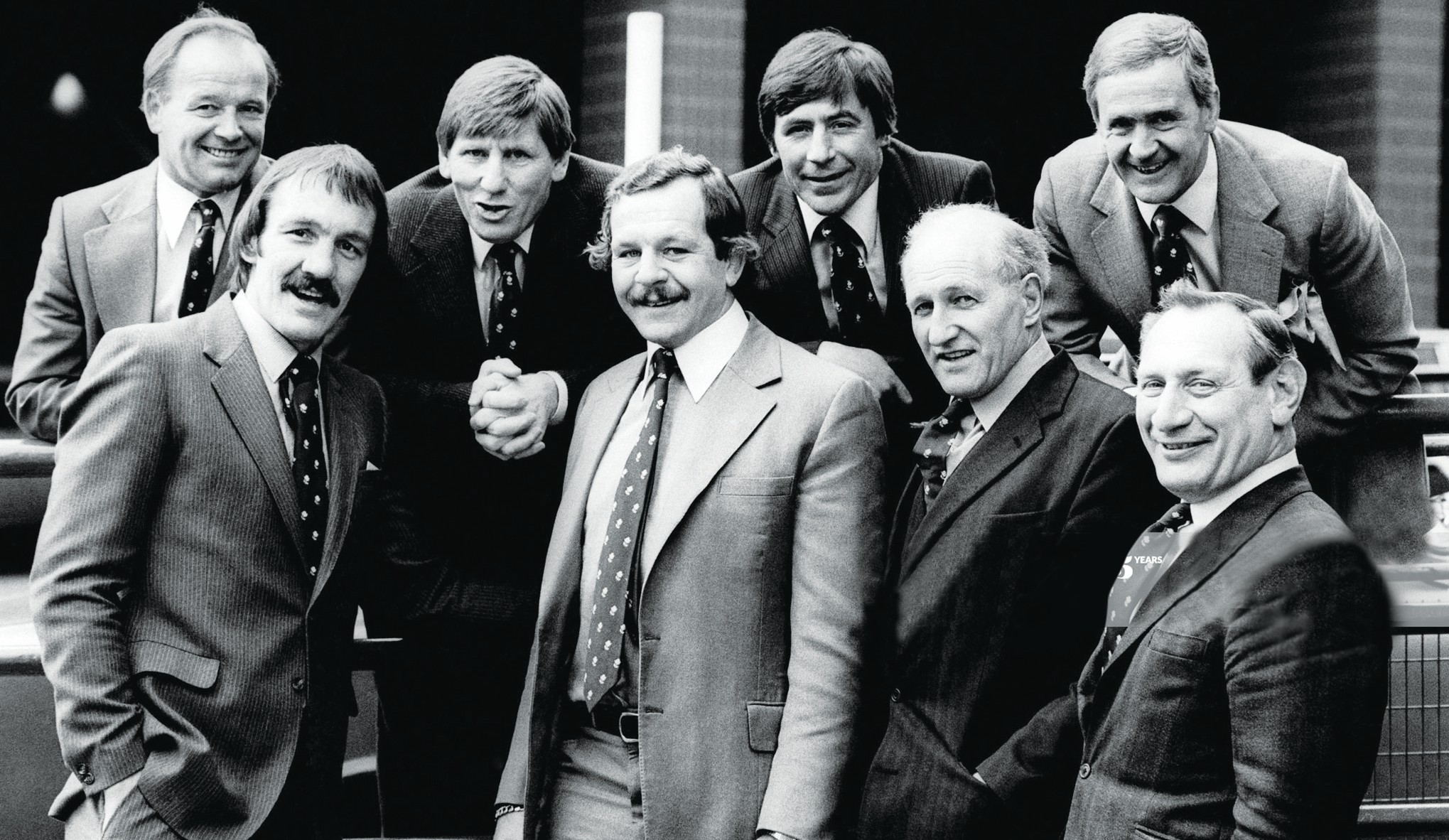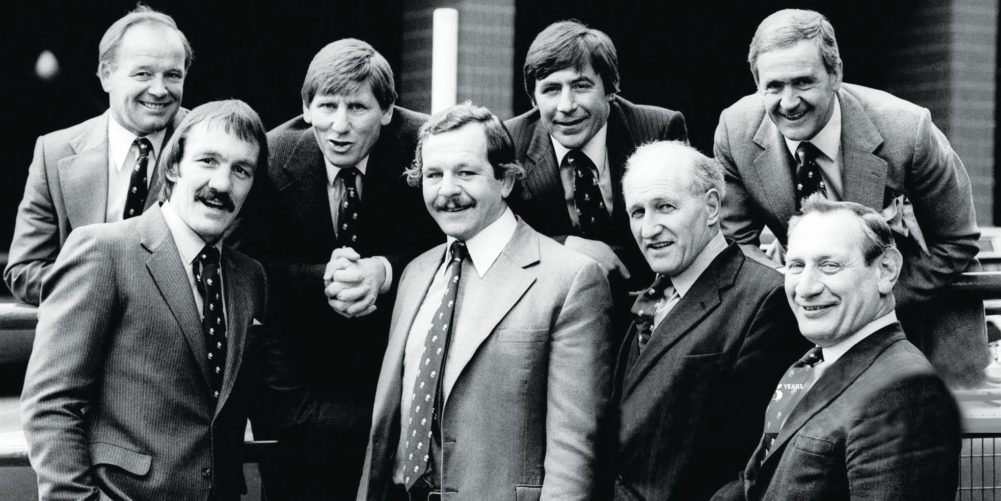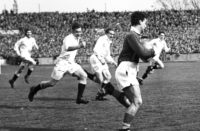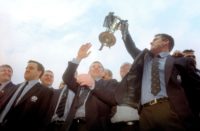Brendan Gallagher delves into some of rugby's most enduring images, their story and why they are still so impactful

Iconic Rugby Pictures: PART 58
Eight England rugby captains together on good behaviour circa 1980
What's happening here?
It's a gathering, exact date unknown, of eight illustrious former England rugby captains. Back row left to right: Dickie Jeeps, Budge Rogers, John Pullin and Jeff Butterfield. Front row: Roger Uttley, Bill Beaumont, John Kendall-Carpenter and Ron Jacobs.
Judging from Bill Beaumont's haircut I suspect it's soon after England's 1980 Grand Slam, possibly later that summer after Beaumont had returned from leading the Lions in South Africa.
What's the story behind the picture?
Service to the country and indeed the Lions. Only Jacobs and Kendall-Carpenter missed out on a Lions cap, the others garnered 34 between them. The blood sweat and toil this “England eight” put in during their playing days for their teams was off the Richter scale, the stories they could tell. Victories over New Zealand South Africa down there, Grand Slams, failed Six Nations campaigns, trips to Ireland during the Troubles, trying to mix top level rugby with proper jobs, County Championship battles, bitter club rivalries.
Yeoman is a very old fashioned, strangely English word, but entirely appropriate when viewing these warriors of old. Their conversation around a few points before and after this picture would have been priceless.
What happened next?
More service. Jeeps was a president of the RFU and chairman of the Sports Council, Rogers was chairman of the England selectors in 1980 and a future RFU president, Pullin retired as one of England's all-time greats and Butterfield ran the Rugby Club in Hallam Street for over 20 years with his wife.
“This picture wouldn't look out of place in 1880 and will still hit the sweet spot in 2080”
Uttley was a long time England manager and schoolmaster at Harrow while both Beaumont and Kendall-Carpenter rose to the ultimate positions of power and influence in becoming chairman of World Rugby or the IRB as it was formerly termed. Kendall-Carpenter is credited as being one of the driving forces in the establishment of the first World Cup in 1987. Jacobs was president of the RFU in 1981 and tour manager in South Africa in 1984.
Why is the picture iconic?
First it's an absolutely miraculous shot as any photographer, especially those who specialise in weddings and group shots, will tell you! The chances of getting eight rugby types together, in suits and ties at a given location at a given time and then to capture them smiling in unison, are precisely zero.
No gurning, no eyes closed, no embarrassed sideways looks and muttering “what the bloody hell are we doing here” comments. Model behaviour.
This is an absolutely perfectly posed mass portrait which, perhaps because of that, has a tangible timeless quality. This picture wouldn't look out of place in 1880 and will still hit the sweet spot in 2080. Over the years I have seen every single face in this picture individually cropped out and used as a large head and shoulders image to illustrate stories on the various characters involved. It is a freakishly good photograph.
Let's also contemplate the social demographic make up of this picture because it says much about the beating heart of England rugby. The stereotypical perception has always been that English rugby was elitist and used to be dominated by Oxbridge types and wellheeled public schoolboys. Home Counties and a bit posh.
What it in fact shows is that England rugby has always been a much broader church incorporating all sorts.
First up you have Jeeps, a fruit farmer from Cambridgeshire and formerly a pupil at Bedford Modern. Next to him Rogers was a star pupil at Bedford School but declined to go to University while John Pullin famously farmed on a plot abutting the old Severn Bridge. The last farm in England before Wales as he described it himself.
Butterfield was a white rose Yorkie from Cleckheaton who went to a red brick university – Loughborough – where he was a star PE graduate while down in the front row Uttley was a proud Red Rose Lanki from Blackpool GS. Beaumont was, of course, another son of Lancashire who went to Ellesmere College and another who missed out on University.
Kendall Carpenter is the one player who fits the erroneous English stereoptye – Truro School and Oxford University – although even he probably learnt more about rugby and rugby players with the no-nonsense Penzance and Newlyn and Cornwall County sides. Finally we have Ron Jacobs who studied agriculture at Nottingham University ahead of a farming life. Neither paupers nor princes. Just eight pretty regular blokes.
Footnote: Beaumont had to step down as captain in 1982 after incurring yet another concussion playing for Lancashire. That started a captaincy merrygo-round in the 1980s that saw Steve Smith, John Scott, Nigel Melville, Paul Dodge, Richard Hill, Mike Harrison, Richard Harding, John Orwin and Rob Andrew all take the captain's armband before England finally settled on a young Will Carling.




























Pingback: ข่าวกีฬา